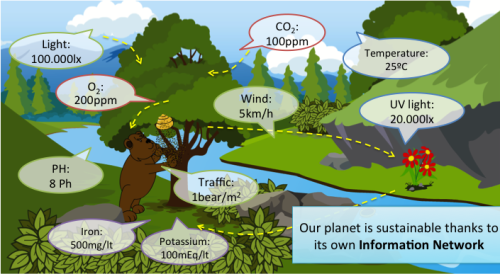
IoT for Urban Informatics
There is a growing need for building urban informatics platforms for addressing pressing urban problems such as traffic, energy, pollution, etc.; all these platforms typically require a geographical distribution of sensors and actuators that aid in fine-grained data collection and actuation. One of the fundamental challenges in building such distributed IoT applications is the need for a high bandwidth-low latency wireless backplane that can seamlessly interconnect all these sensors and actuators especially when the sensors and actuators could have high mobility, such as in the case of traffic sensing. With the emergence of mmWave backhaul technologies, one can effectively such a high bandwidth-low latency backplane for IoT applications. Such a backplane would need programmable control logic that sits in the middle of the network to provide the right functionality network primitives to IoT applications.
Projects
This is new and ongoing work. Some of the projects in this space are below.
- Road Traffic Monitoring
- Mobile Health Monitoring
- Air Quality Monitoring
- Water Quality Monitoring
SDN-Powered Platforms
We aim to build a unified underlying network platform for the above applications and more. We believe Software-Defined Networking (SDN) offers a rich class of primitives and a control logic framework that can provide building blocks for the type of platforms that we aim to build to integrate. Current generation cellular networks, such as AT&T, are spending enormous resources on converting their entire cellular infrastructure into a programmable platform using SDN technologies.
We envision a scenario where all IoT devices, sensors and actuators will wirelessly interact with mobiles phones as the intermediary sync points, which will in turn leverage the cellular network to transmit all the control logic data between the IoT sensors and the cloud infrastructure managing these sensors.
Examples
Traffic Management
As the first example, consider a futuristic intelligent traffic management system where every traffic camera is connected to a 5G-enabled mobile device which continuously interacts with the cloud infrastructure instead of the status quo of setting up a detailed wired infrastructure for every camera end point.
Energy Monitoring
As a second example, consider an intelligent energy management application where all the energy sensors and actuators in a house are controlled over a mobile interface and the mobile device acts as the local sync point with the city-wide centralized cloud energy manager.
Challenges
The existing cellular network infrastructure provides very limited functionality for empowering such applications especially due to the low latency, high bandwidth and QoS requirements. Large-scale IoT applications continuously generated large volumes of "tiny data" and the existing scheduling mechanisms used in packet data gateways are not suited to handle such traffic with applications experiencing high congestion and latency. IoT applications also need specialized control of flow management, flow-specific QoS requirements. In specific cases such as video applications, the network may need to handle different types of application data types which may require data-specific processing capabilities in the core network. All these factors motivate the need for a general purpose substrate that an SDN framework can easily enable. Thus, our focus areas are in i) efficient data acquisition, assimilation and control, and ii) making the platform programmable to be adopted for as many different types of applications as possible.
People
Shiva R Iyer
Fatima Zarinni
Lakshminarayanan Subramanian